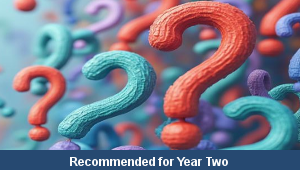Home > Key Stage One > Maths > Year Two Planning > Term Two
Unit A – Money Counting

This maths scheme of work for Key Stage One gets the children to identify and record combinations of coins and notes to match different money amounts to use when making comparisons between number sums. The class can practise using concrete objects and diagrams to model coins that can match each amount.

Identify and record combinations of coins and notes to match different money amounts to use when making comparisons between number sums

Lesson One : Money Sums
Identify and record the matching addition sums for multiples of different coins that make a range of totals to ten, twenty and thirty pence

Lesson Two : Tens and Twenties
Identify, calculate and record different combinations of ten and twenty pence coins that can match a range of money sums to one pound

Lesson Three : Coins Match
Explain and model how to use the symbols for less than and greater than to compare pairs of money amounts using different sets of coins

Lesson Four : Coin Facts
Identify and record a selection of true and false facts that can be used to compare money amounts using different combinations of coins

Lesson Five : Counting Pounds
Identify and record how to complete bar model diagrams to show groups of pound coins and notes that can match different money amounts
-

Maths Measurement Assessment
Assess abilities in estimating, measuring and comparing a range of different measurements for length, mass and capacity
-

Family Life
Investigate and reflect on some of the special events and experiences that might happen in the life of a family
-

Final Sounds Word Guess
Practise playing some guessing and matching games to identify the spelling and meaning of words with different final sounds
-

Building Reports
Explore how to collect facts and information to work with when composing and presenting non-chronological reports about buildings that can be found in the local area
